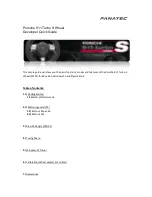
Driving tips
R
Maintain a greater distance from the vehi-
cle in front than when driving without a
trailer.
R
Avoid braking abruptly. If possible, brake
gently at first to allow the trailer to run on.
Then, increase the braking force rapidly.
R
The values given for gradient-climbing
capabilities from a standstill refer to sea
level. When driving in mountainous areas,
note that the power output of the engine,
and consequently the vehicle's gradient-
climbing capability, decrease with increas-
ing altitude.
If the trailer swings from side to side:
X
Do not accelerate.
X
Do not counter-steer.
X
Brake if necessary.
Folding out the ball coupling
G
WARNING
Make sure that no persons or animals are in
the pivoting range of the ball coupling. Other-
wise, they could be injured.
Before you can tow a trailer with your vehicle,
you must fold out the ball coupling.
X
Make sure that the vehicle is stationary.
X
Open the tailgate.
G
WARNING
Make sure that the ball coupling is engaged,
either in its folded-out or folded-in position.
The indicator lamp on the release knob is off.
Do not pull the ball coupling release switch
when a trailer is coupled or a bicycle rack is
fitted.
X
Pull the release knob
:
until the ball cou-
pling unlocks.
The ball coupling folds out from under the
rear bumper.
The indicator lamp on the release knob
flashes. The trailer socket folds away auto-
matically.
X
Press the ball coupling in the direction of
the arrow until it engages in a vertical posi-
tion.
The indicator lamp on the release knob
goes off.
The multifunction display shows the
Check trailer hitch lock
message
until the ball coupling is engaged.
X
Remove the protective cap from the ball
coupling and store it in a safe place.
Coupling up a trailer
Important safety notes
G
WARNING
Never lock, unlock, open or close a vehicle
door or tailgate when coupling up or decou-
228
Towing a trailer
Dr
iving
and
parki
ng
















































